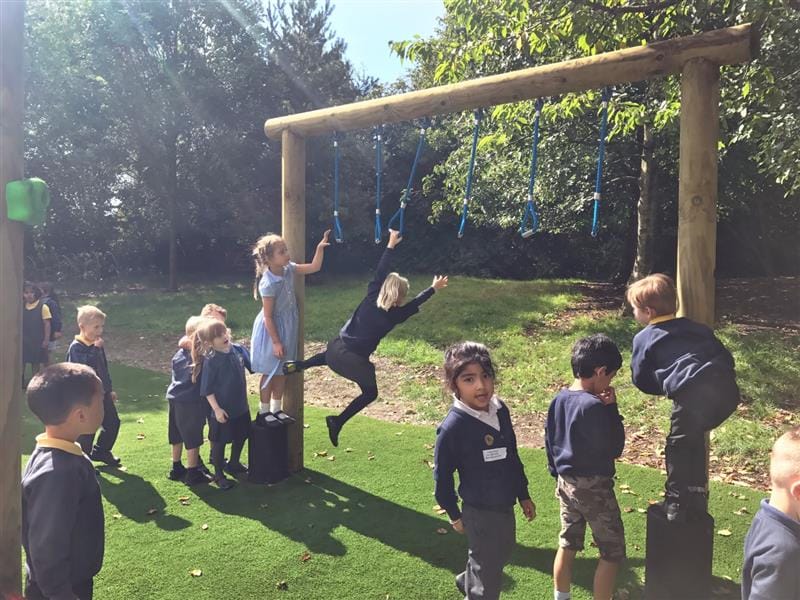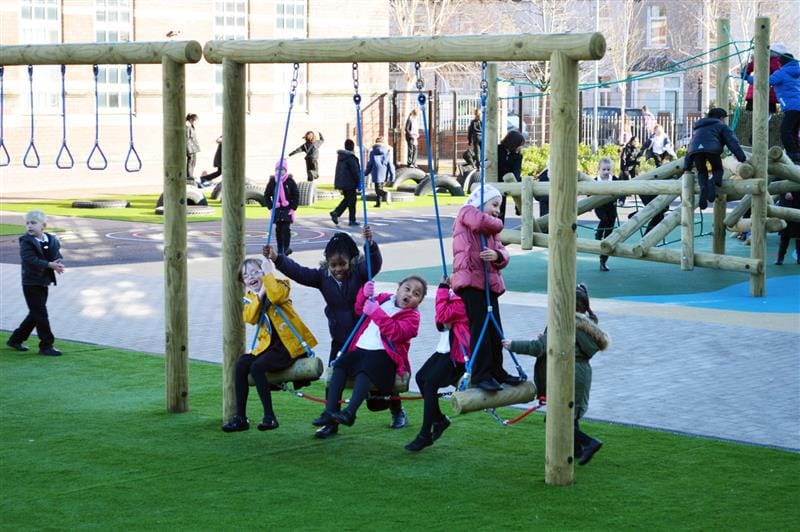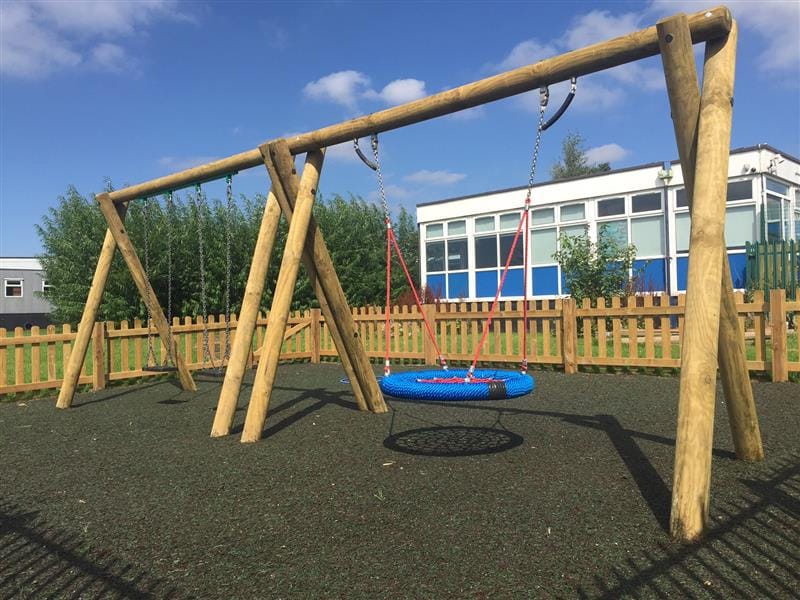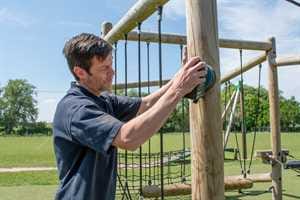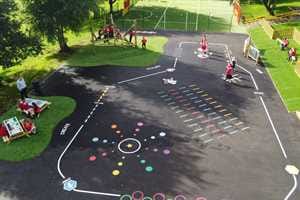
Playground Design
The Many Benefits Of Swinging On Kinetic Playground Equipment
Think a Playground Swing is just for fun? Think again! We use the word 'just' with hesitation, because having fun is an essential part of childhood that should never be overlooked.
However, it is important to know that there are some really wonderful developmental benefits to the fun and enjoyment of swinging for all children, and especially for children with Special Educational Needs.
Here we explore the benefits of kinetic playground equipment, and look at how Early Years and Primary Education providers can use swings, monkey bars and zip wires in their outdoor playground to support their pupils’ physical development.
Most children love riding on a swing and dangling from monkey bars. The more adventurous thrill seekers love flying backwards and forwards on a zip wire too!
These activities are great for releasing energy, building self-confidence and learning to take safe risks. They also promote brain development, and in the Early Years are key in supporting the Characteristics of Effective Learning.
Occupational therapists often use swing therapy as a sensory integration tool for children with sensory processing disorders and/or Autism. This is why kinetic playground equipment is such an essential resource for schools and nurseries.
Swinging Helps With Sensory Integration
Movement involves the transmission of so many different messages to and from different parts our body. Swinging is a brilliant tool for helping young children to figure out how to interpret those messages, and how to use their bodies to the best of their ability.
Swinging helps with how our brains receive and process sensory information from our bodies and the environment, and then organise it into information for creating action, so that we can do all the different tasks that we need to do in everyday life.
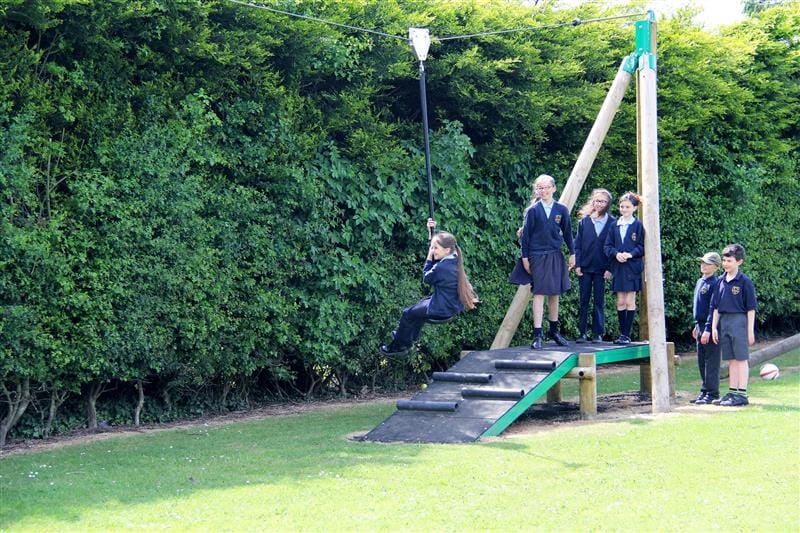
The concept of Sensory Integration was initially discovered in the USA in the 1960s and 1970s by occupational therapist and psychologist Jean Ayres.
She explored how difficulties with receiving and processing sensory information from our bodies and the environment can transfer into difficulties children face at school, and in using their bodies to engage in everyday life.
She described Sensory Integration as:
The neurological process that organises sensation from one’s own body and from the environment and makes it possible to use the body effectively with the environment
Most of us think of the five senses of sight, hearing, touch, taste and smell as the main senses used for learning.
However, we have two much larger sources of sensory information - the Vestibular System (the sense of balance, weight and spatial orientation for coordinating movement with balance) and Proprioception (the sense of the relative position of our body parts, tendons, muscles and joints, and the strength of effort needed for movement).
All of these systems link together so that we can move with ease and experience our environment as it is.
Product Spotlight
Developing the Vestibular System Through Swinging
The vestibular system forms part of the inner ear - the direction of fluid inside the ear tells our brain how and when we are moving and in which direction.
It determines our ability to balance, to walk properly, to climb up and down stairs, to adjust between different levels, and to react promptly to changes underfoot. It explains to us where we are in space, and without it, the world would seem a very daunting place.
A child’s vestibular system is most strongly impacted by swinging. When a child uses a swing, they move in multiple directions and have to balance carefully on the seat so as not to fall off. This helps to integrate the vestibular system.

Given the choice to play freely, children will naturally give themselves plenty of vestibular stimulation - jumping and swinging, riding scooters and skateboards, performing cartwheels and somersaults, climbing up and balancing along walls, for example - in order to master all kinds of movement through space.
Schools and nurseries that provide opportunities for children to swing, to be physical in their outdoor playground, offer abundant opportunities for movement and enable their pupils to properly develop their vestibular systems.
Developing Proprioception Using a Swing
Touch is a major contributor to full vision. Think of Early Years learners who, every time they say they want to “see” something, they have to get hold of it.
For them, seeing and understanding is not just done through the eyes but the whole body.
Proprioception is described as body awareness and our sense of security. It is about knowing where our different body parts are located in relation to each other, and how they are moving, through messages sent from our peripheral body to our brain and ears. It directs muscles as to how to react to external stimuli.
When children are swinging, their bodies have to figure out where they are in space, and how they can control a moving object.
Children with underdeveloped proprioception need to move all the time to get more input from their muscles, so that they can work out where they are in space.
They might bump into things frequently, fall off chairs, or stretch and move their joints regularly to help them to concentrate in class.
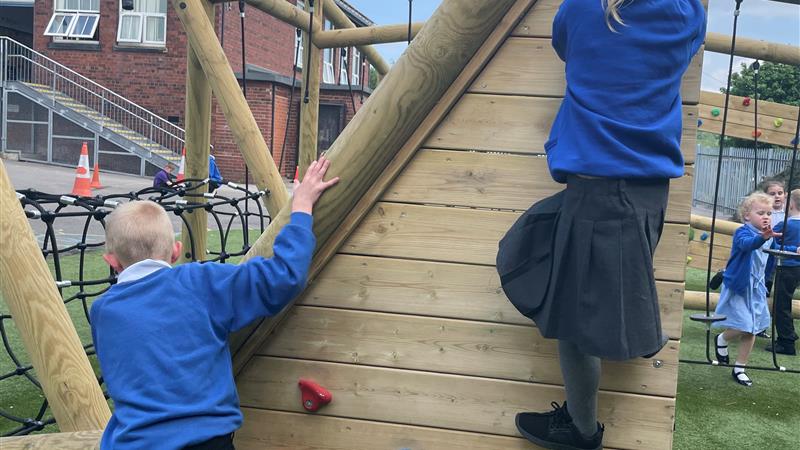
Their proprioceptive systems will require a great deal of concentration to be able to react to the surrounding environment, and their brains will struggle to relate what they see to appropriate physical reactions.
For these children, swinging offers a form of release through pressure on muscles and joints, that helps them to exercise and develop their proprioceptive systems.
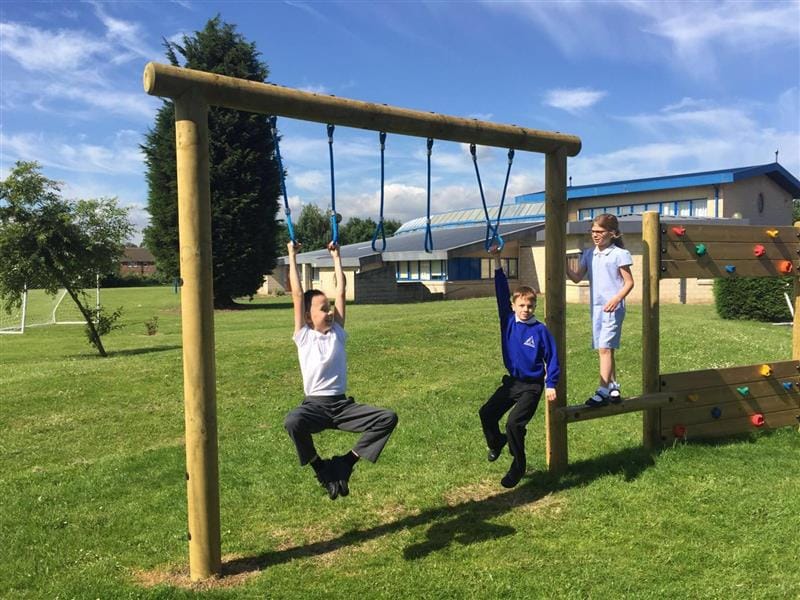
Swing Therapy – Supporting Children with Sensory Processing Disorders
For children with different autism spectrum conditions such as Autism, PDD, ADHD, Asperger’s, and Sensory Processing Disorders such as proprioceptive or vestibular dysfunction and tactile defensiveness, the benefits of using swinging apparatus both indoors and in the school playground are immense.
For them, processing stimuli and combining all of their senses to work together is a hugely challenging and often overwhelming task.
Various types of swings offer some of the best tools for Sensory Integration Therapy. Occupational therapists will usually incorporate swinging into a child’s therapy session if a child has any one of these conditions.

For some SEN children, a smooth and gentle swaying motion is soothing and will help them to relax and improve their ability to concentrate. The motion of swinging restores balance to the vestibular system. It provides deep pressure on their sensory receptors and generally helps children on the autistic spectrum to feel more balanced.
Some children with vestibular dysfunction might feel uneasy with using a swing at first. For them, it is a case of regaining balance and equilibrium and helping them learn how to tolerate vestibular stimuli.
Equipment like the Rockies provides an inclusive swinging experience by including the wobble board. Children with a less developed vestibular system can simply crawl across the board and develop their confidence whilst having fun.
Schools that can guide their pupils towards fun swinging activities really help to support their brain development. It is no coincidence that young children usually choose for themselves to play energetically, spontaneously running, jumping, swinging and climbing on whatever they can!
They crave what is good for their development.
What Is The Right Swinging Apparatus?
When choosing kinetic playground equipment for your school playground, it is essential to consider safety at all times.
Tried and tested industry standard equipment that is able to support the user is the safest option. Playground equipment should be installed onto appropriate safety surfacing and the perimeters of the equipment’s range need to be taken into account.
Children need to be able to choose to swing of their own accord, under adult supervision. Kinetic Playground Equipment must allow them to stop of their own accord and at a moment’s notice.
If a child with Special Educational Needs has an occupational therapist, they can usually advise and help a child’s teacher with methods of incorporating swinging activities into that child’s daily learning.
At Pentagon we design and install a wide range of fun, safe and effective outdoor Kinetic Playground Equipment for schools and nurseries. You can view our range here. Please do not hesitate to contact us here for further information. If you are considering installing any form of swinging equipment in your school playground we will happily provide a free consultation.
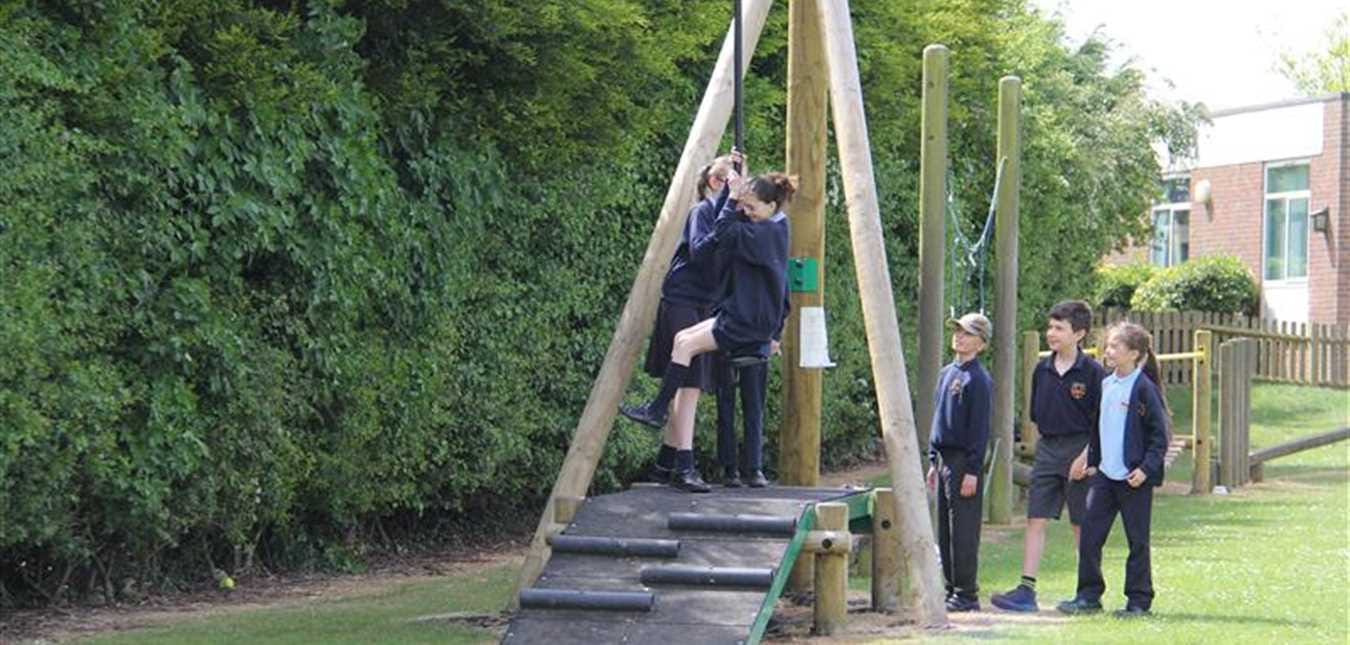
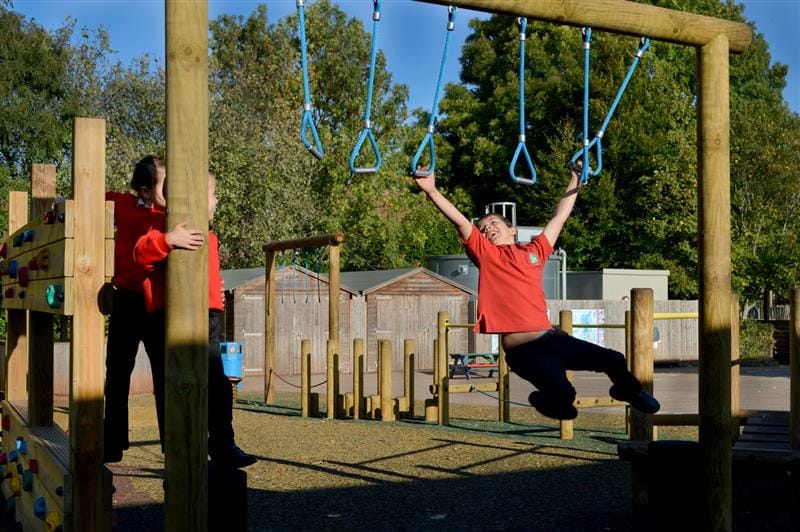
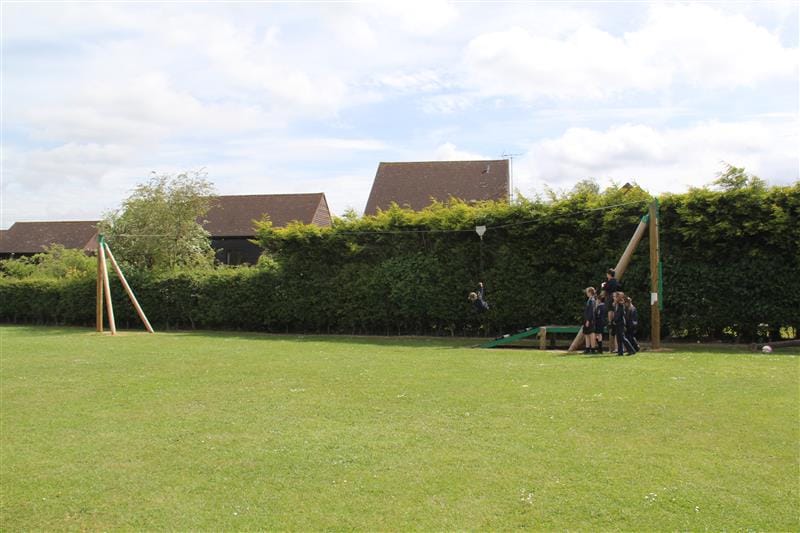
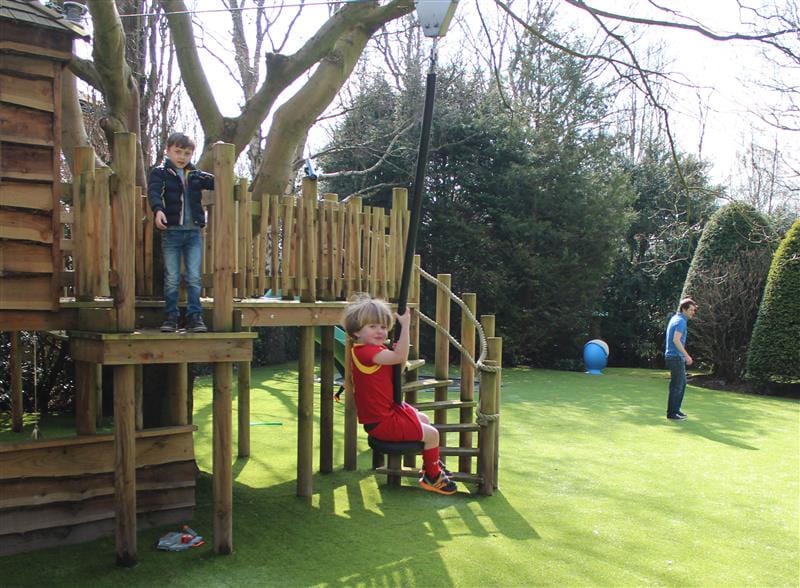
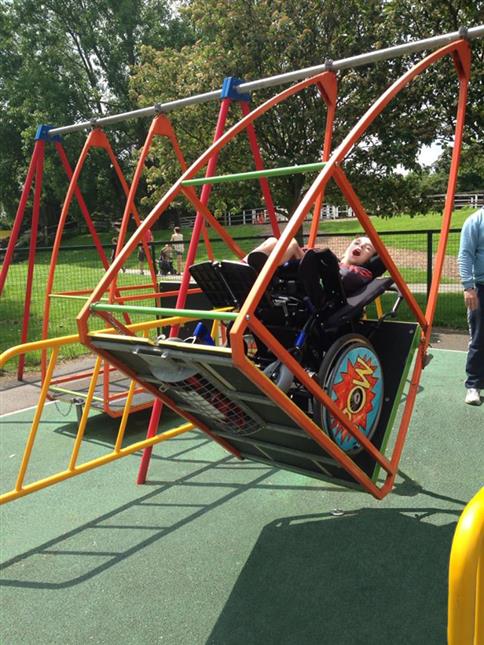

 with Cradle Seat 3D Render.jpg)

